Abstract
In a pilot study to investigate the health effects of swine confinement work on the respiratory tract pulmonary function tests and a questionnaire for respiratory symptoms were used. Complete data, including qualitative exposure information, were gathered for 132 owners of fattening, breeding, or closed pig farms. All measured pulmonary function values, except the FVC, were on average lower than the reference values of the European Committee for Coal and Steel. There were no significant associations between duration of exposure and pulmonary function. About 28% of the farmers had respiratory or flu-like symptoms during or shortly after confinement work; 14% reported symptoms four to eight hours after work. For the fattening farm the following elements of confinement management were negatively correlated with pulmonary function: fully slatted floor, an automatic feeding system, natural ventilation, and the use of dust masks. A significant association between lung disease of the pigs and pulmonary function of the pig farmers was observed.
Full text
PDF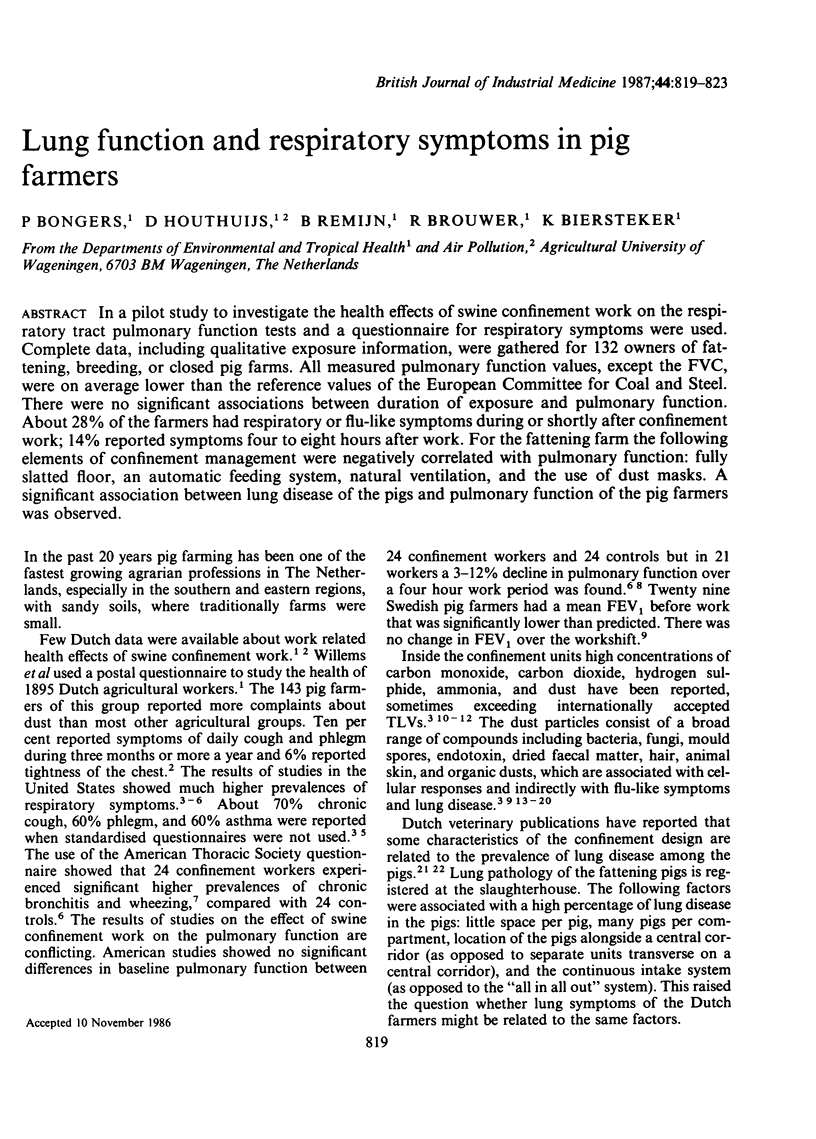
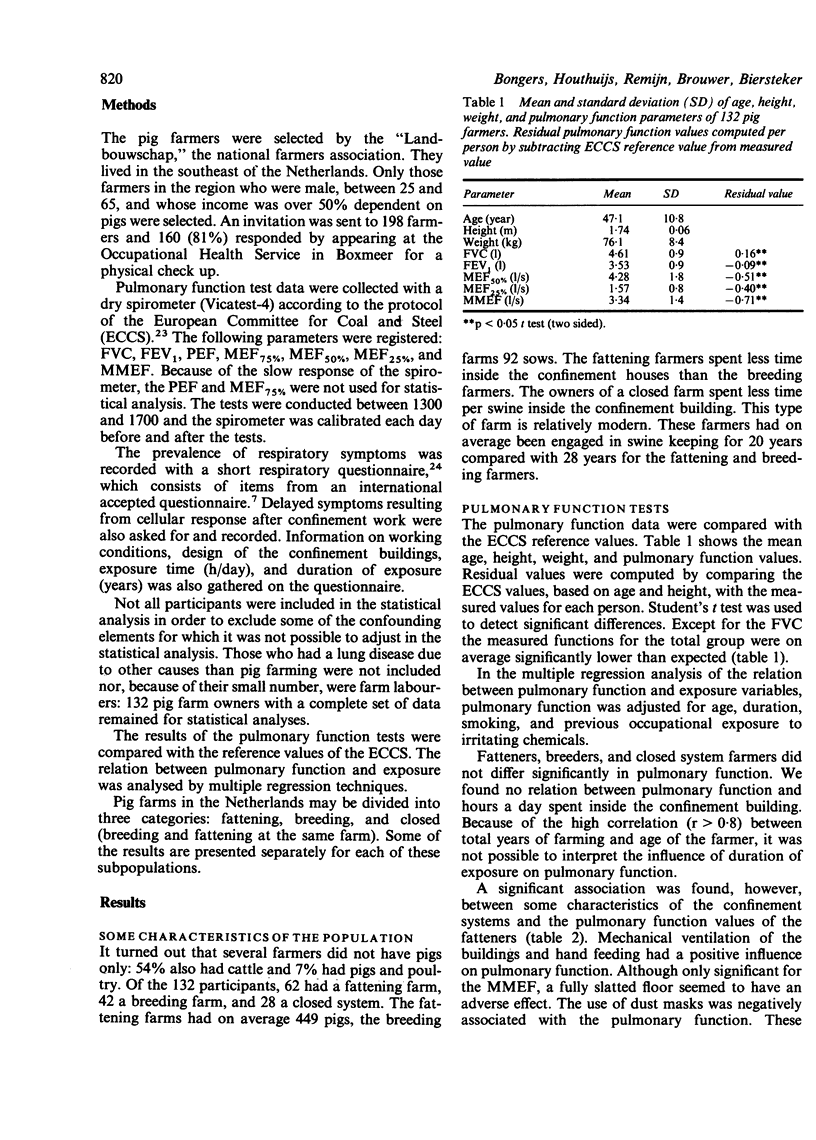
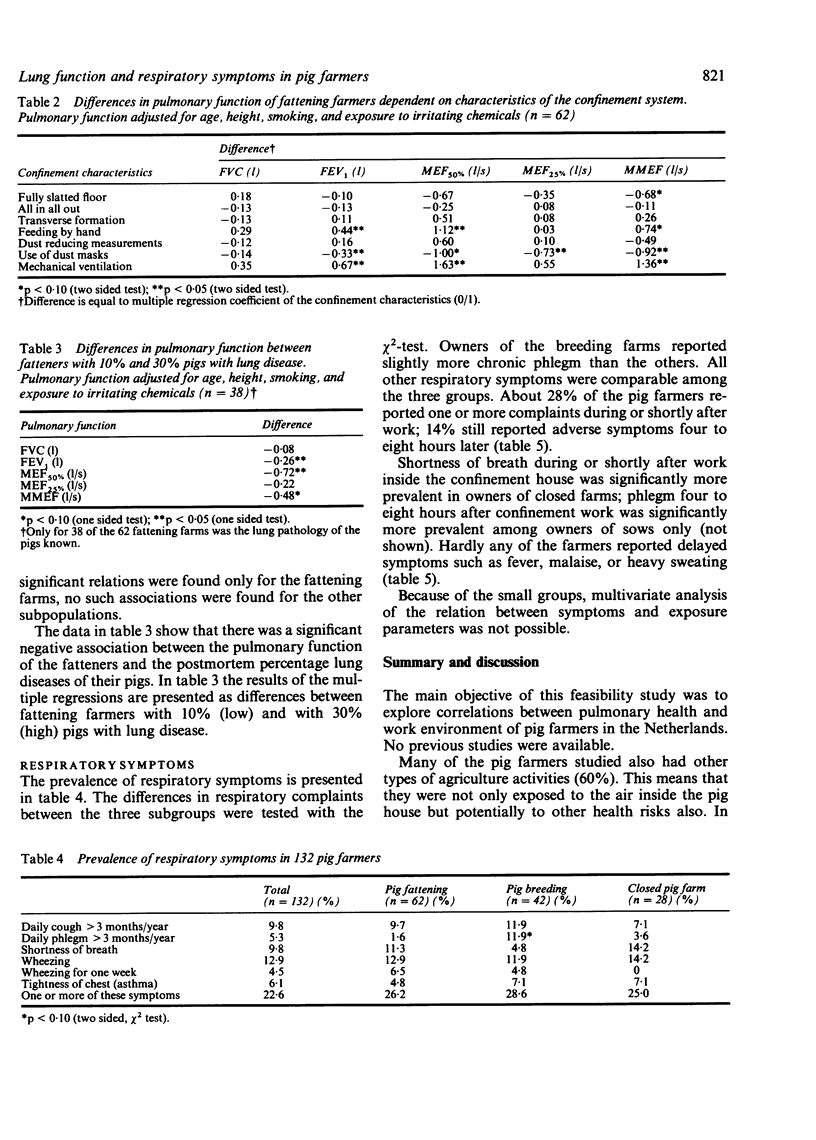
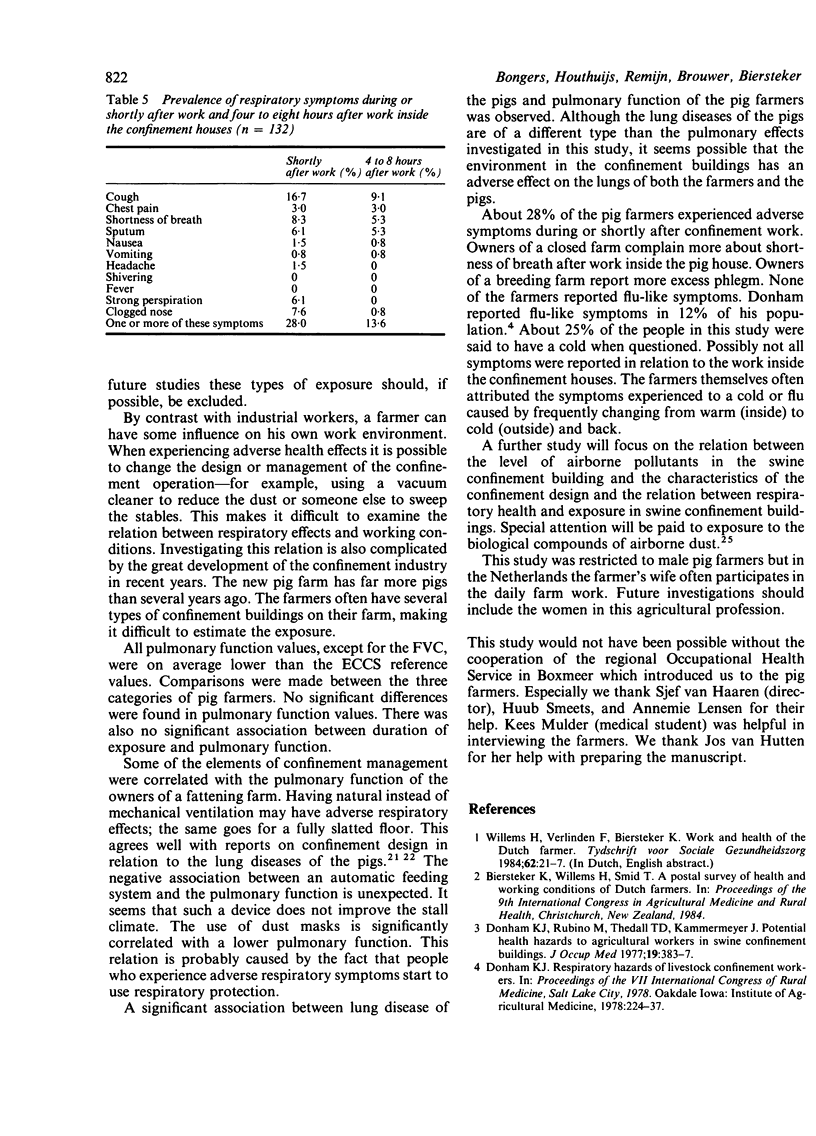
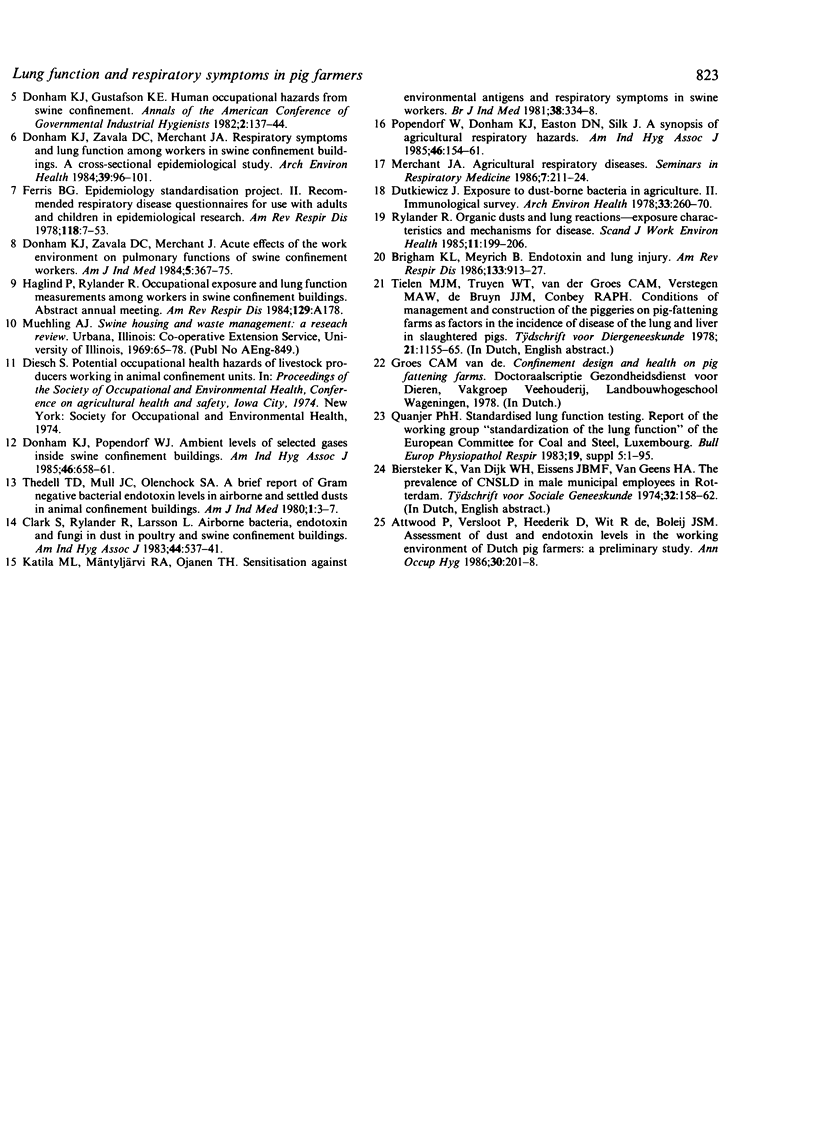
Selected References
These references are in PubMed. This may not be the complete list of references from this article.
- Attwood P., Versloot P., Heederik D., de Wit R., Boleij J. S. Assessment of dust and endotoxin levels in the working environment of Dutch pig farmers: a preliminary study. Ann Occup Hyg. 1986;30(2):201–208. doi: 10.1093/annhyg/30.2.201. [DOI] [PubMed] [Google Scholar]
- Brigham K. L., Meyrick B. Endotoxin and lung injury. Am Rev Respir Dis. 1986 May;133(5):913–927. [PubMed] [Google Scholar]
- Clark S., Rylander R., Larsson L. Airborne bacteria, endotoxin and fungi in dust in poultry and swine confinement buildings. Am Ind Hyg Assoc J. 1983 Jul;44(7):537–541. doi: 10.1080/15298668391405265. [DOI] [PubMed] [Google Scholar]
- Donham K. J., Popendorf W. J. Ambient levels of selected gases inside swine confinement buildings. Am Ind Hyg Assoc J. 1985 Nov;46(11):658–661. doi: 10.1080/15298668591395490. [DOI] [PubMed] [Google Scholar]
- Donham K. J., Rubino M., Thedell T. D., Kammermeyer J. Potential health hazards to agricultural workers in swine confinement buildings. J Occup Med. 1977 Jun;19(6):383–387. doi: 10.1097/00043764-197706000-00004. [DOI] [PubMed] [Google Scholar]
- Donham K. J., Zavala D. C., Merchant J. A. Respiratory symptoms and lung function among workers in swine confinement buildings: a cross-sectional epidemiological study. Arch Environ Health. 1984 Mar-Apr;39(2):96–101. doi: 10.1080/00039896.1984.10545842. [DOI] [PubMed] [Google Scholar]
- Donham K. J., Zavala D. C., Merchant J. Acute effects of the work environment on pulmonary functions of swine confinement workers. Am J Ind Med. 1984;5(5):367–375. doi: 10.1002/ajim.4700050505. [DOI] [PubMed] [Google Scholar]
- Dutkiewicz J. Exposure to dust-borne bacteria in agriculture. II. Immunological survey. Arch Environ Health. 1978 Sep-Oct;33(5):260–270. doi: 10.1080/00039896.1978.10667345. [DOI] [PubMed] [Google Scholar]
- Heck H. D., Casanova-Schmitz M., Dodd P. B., Schachter E. N., Witek T. J., Tosun T. Formaldehyde (CH2O) concentrations in the blood of humans and Fischer-344 rats exposed to CH2O under controlled conditions. Am Ind Hyg Assoc J. 1985 Jan;46(1):1–3. doi: 10.1080/15298668591394275. [DOI] [PubMed] [Google Scholar]
- Katila M. L., Mäntyjärvi R. A., Ojanen T. H. Sensitisation against environmental antigens and respiratory symptoms in swine workers. Br J Ind Med. 1981 Nov;38(4):334–338. doi: 10.1136/oem.38.4.334. [DOI] [PMC free article] [PubMed] [Google Scholar]
- Rylander R. Organic dusts and lung reactions--exposure characteristics and mechanisms for disease. Scand J Work Environ Health. 1985 Jun;11(3 Spec No):199–206. doi: 10.5271/sjweh.2234. [DOI] [PubMed] [Google Scholar]
- Thedell T. D., Mull J. C., Olenchock S. A. A brief report of gram-negative bacterial endotoxin levels in airborne and settled dusts in animal confinement buildings. Am J Ind Med. 1980;1(1):3–7. doi: 10.1002/ajim.4700010103. [DOI] [PubMed] [Google Scholar]


